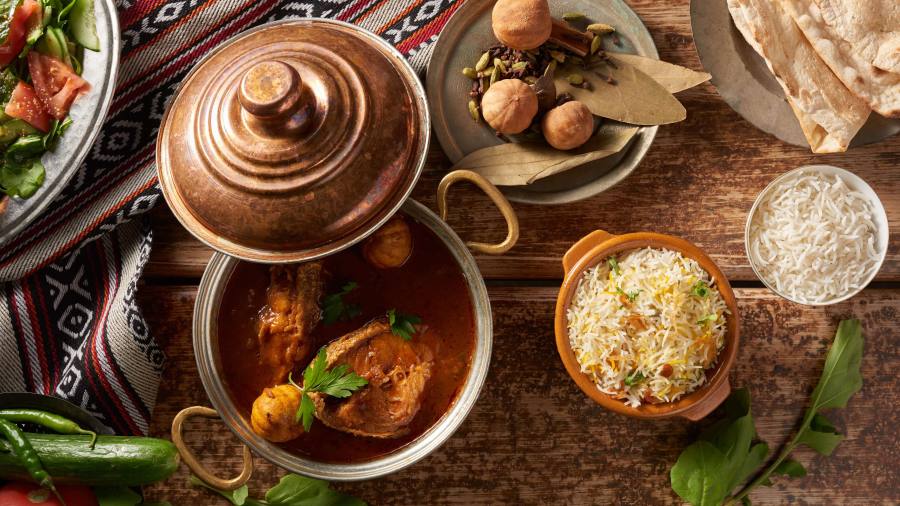Timeless Greek
Moussaka
Moussaka isn't just a dish; it's a symphony of flavors that has won the hearts of food lovers worldwide. This Greek delicacy artfully combines layers of silky eggplant, richly spiced meat sauce, and velvety béchamel to create a culinary experience that lingers in your memory.
Join us on a gastronomic adventure as we uncover the secrets behind this iconic dish. Whether you're an experienced cook or a curious food enthusiast, this guide will equip you with the knowledge to create the ultimate moussaka.
Chef's Notes:
- Moussaka is a cherished Greek dish layering eggplant, seasoned meat, and creamy béchamel.
- The contemporary Greek version was introduced in the 1920s by the innovative chef Nikolaos Tselementes.
- While lamb is traditional, beef makes for a delightful alternative in this hearty casserole.
The Origins of Moussaka
The story of moussaka stretches beyond Greece's sunny shores. Its name derives from the Arabic musaqqa'a, meaning "chilled" or "moistened," hinting at its Middle Eastern heritage.
The moussaka we know today is a relatively recent creation. In the 1920s, Nikolaos Tselementes, a Greek chef with French culinary training, reimagined the dish. His addition of the creamy béchamel topping transformed moussaka into the beloved classic we enjoy today.
Ingredients for the Perfect Moussaka
To craft this Greek culinary masterpiece, gather these ingredients:
- 2 large eggplants, sliced
- 1 lb ground lamb or beef
- 1 onion, finely diced
- 2 cloves garlic, minced
- 1 can crushed tomatoes
- 1/2 cup red wine
- 2 tsp dried oregano
- 1 tsp ground cinnamon
- Salt and pepper to taste
- 1/2 cup grated Parmesan cheese
For the béchamel sauce:
- 4 tbsp butter
- 4 tbsp all-purpose flour
- 3 cups milk
- 1/4 tsp ground nutmeg
- 2 eggs, beaten
Preparing the Eggplant
Eggplant forms the backbone of your moussaka. Here's how to prepare it perfectly:
1. Cut the eggplants into 1/2-inch thick rounds.
2. Sprinkle both sides with salt and let them rest for 30 minutes to release excess moisture.
3. Rinse the eggplant slices thoroughly and pat dry with paper towels.
4. Brush with olive oil and grill or bake until golden and tender.
Crafting the Meat Sauce
The meat sauce is where flavors come alive. Follow these steps:
1. In a large skillet, brown the ground meat until cooked through.
2. Add diced onions and minced garlic, cooking until fragrant and translucent.
3. Pour in the red wine, allowing it to simmer and reduce slightly.
4. Stir in crushed tomatoes, oregano, cinnamon, salt, and pepper.
5. Let the sauce simmer for about 30 minutes until it reaches a thick consistency.
The blend of oregano and cinnamon is key to moussaka's distinctive Greek flavor. Be generous with these aromatic spices!
Making the Béchamel
The luscious béchamel sauce is the pièce de résistance of moussaka. Here's how to create it:
1. In a saucepan over medium heat, melt the butter.
2. Whisk in flour to form a smooth roux.
3. Gradually add milk, whisking constantly to ensure a smooth texture.
4. Cook until the sauce thickens, then stir in the nutmeg.
5. Remove from heat and slowly incorporate the beaten eggs, whisking continuously.
Assembling Your Moussaka
Now for the exciting part - bringing your moussaka together:
1. Arrange a layer of eggplant slices in a baking dish.
2. Spread half of the meat sauce over the eggplant.
3. Create another layer of eggplant slices.
4. Top with the remaining meat sauce.
5. Pour the béchamel sauce evenly over the top.
6. Finish with a sprinkle of grated Parmesan cheese.
Baking to Perfection
Set your oven to 350°F (175°C). Bake the moussaka for approximately 45 minutes, until the top turns golden brown and bubbles. Allow it to rest for 15-20 minutes before serving. This brief rest allows the flavors to meld beautifully and makes slicing easier.
Serving Suggestions
While moussaka is a complete meal on its own, it pairs wonderfully with a fresh Greek salad and a slice of crusty bread. For beverages, consider a bold red wine like Agiorgitiko or a crisp white Assyrtiko.
Variations on the Classic
While the traditional recipe is sublime, there are many delightful variations to explore:
- Vegetarian moussaka: Substitute the meat with lentils or a medley of sautéed vegetables.
- Potato moussaka: Use layers of sliced potatoes instead of eggplant for a heartier version.
- Papoutsakia: Stuff whole eggplants with the meat mixture for charming individual portions.
Nutrition Facts
Here's a nutritional breakdown per serving (based on 8 servings):
-
- Calories: 351
- Fat: 18g
- Carbs: 27g
- Protein: 20g
Keep in mind that moussaka is a rich dish best enjoyed in moderation as part of a varied diet.
Storing and Reheating
Moussaka's flavors often intensify overnight, making leftovers a treat! Store in an airtight container in the refrigerator for up to 3 days. To reheat, place in a 350°F (175°C) oven for about 20 minutes, or until thoroughly warmed.
The Cultural Significance of Moussaka
In Greece, moussaka is more than just a popular dish; it's a symbol of home cooking and family togetherness. While available in tavernas throughout the country, many Greeks consider it a special meal best prepared and enjoyed at home.
Moussaka has also become an ambassador for Greek cuisine globally. Its complex flavors and textures have garnered fans far beyond the Mediterranean, solidifying its status as a beloved international comfort food.
FAQs
Can I make moussaka ahead of time?
Certainly! You can assemble the moussaka a day in advance and refrigerate. Just remember to bring it to room temperature before baking.
Is moussaka gluten-free?
Traditional moussaka contains gluten in the béchamel sauce. However, you can easily adapt it using a gluten-free flour alternative for a celiac-friendly version.
Can I freeze moussaka?
Absolutely! Moussaka freezes beautifully. Wrap it securely and freeze for up to 3 months. Thaw in the refrigerator overnight before reheating.
What's the difference between moussaka and pastitsio?
While both are layered Greek dishes, pastitsio features pasta instead of eggplant and typically has a more pronounced cinnamon flavor profile.
Is moussaka healthy?
Moussaka can be part of a balanced diet when enjoyed in moderation. It's rich in proteins and vegetables but also high in calories and fat.
Creating moussaka may require some time and effort, but the results are truly rewarding. This Greek classic is a labor of love, offering a comforting, flavorful, and deeply satisfying meal. So gather your ingredients, summon your inner chef, and prepare to create a dish that would make any Greek yiayia beam with pride!





























 Gastronomy Cities
Gastronomy Cities
 Amazing Food
Amazing Food
 Chef's Talk
Chef's Talk